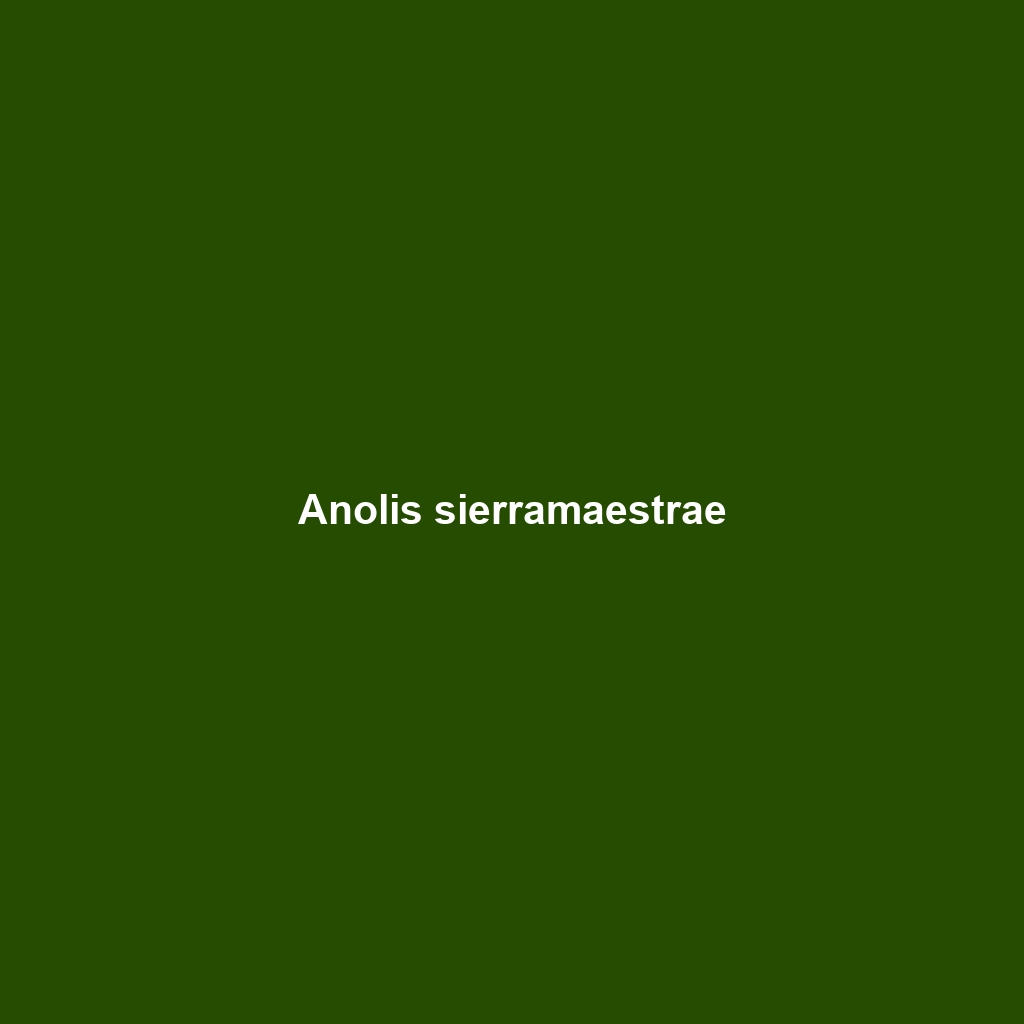Anolis sierramaestrae: A Unique Lizard Species
Common Name: Anolis sierramaestrae
Scientific Name: Anolis sierramaestrae
Habitat
Habitat: Anolis sierramaestrae is primarily found in the Sierra Maestra mountain range of Cuba. This species thrives in humid, tropical forests at elevations between 900 and 1,200 meters. The lizard prefers forest edges and is often spotted basking on tree trunks and branches, showcasing its adaptability to specific microhabitats within its geographic range.
Physical Characteristics
Physical Characteristics: Anolis sierramaestrae typically reaches a size of 8-10 cm in total length. This species is known for its vibrant green and brown coloration, which aids in camouflage among the foliage. It features a slender body with a distinctive long tail that can be up to twice the body length. The enlarged toe pads facilitate climbing, making it an agile and adept arboreal lizard. Male Anolis sierramaestrae exhibit more prominent dewlaps, which play a crucial role in territorial displays.
Behavior
Behavior: The behavior of Anolis sierramaestrae is characterized by its territoriality and display rituals. Males actively defend their territory, engaging in head-bobbing and dewlap display to attract females and deter rivals. This species is primarily diurnal, showing increased activity during the daytime when it can be seen foraging for food and basking in the sun. Anolis sierramaestrae is also known for its ability to change color slightly to blend into its surroundings, a behavior that enhances its survival against predators.
Diet
Diet: Anolis sierramaestrae primarily feeds on a diet of insects, including flies, beetles, and spiders, making it an important predator in its ecosystem. This lizard is known to exhibit feeding behaviors such as active foraging and ambush predation, utilizing its keen eyesight to spot prey from a distance. A varied diet enables it to thrive in its humid forest environment.
Reproduction
Reproduction: The reproductive habits of Anolis sierramaestrae involve seasonal breeding, typically occurring during the warmer months from May to August. Females lay one to two eggs per clutch, burying them in moist soil or leaf litter. The eggs incubate for approximately 6-8 weeks, with hatchlings emerging fully formed and independent. Males often engage in displays to court females during the mating season, showcasing their vibrant dewlaps.
Conservation Status
Conservation Status: Anolis sierramaestrae is classified as ‘Vulnerable’ due to habitat loss and degradation caused by deforestation and agricultural expansion. Conservation efforts are critical to preserve its natural habitat and ensure the species’ longevity in the wild. Awareness campaigns and habitat protection initiatives are underway to improve its conservation outlook.
Interesting Facts
Interesting Facts: Anolis sierramaestrae is often referred to as the “Sierra Maestra Green Anole” because of its vivid coloration. This species exhibits an intriguing adaptation known as “flicking,” where it rapidly changes the position of its body to confuse predators. It has also been the subject of ecological studies focusing on the effects of climatic variations on its behavior and population dynamics.
Role in Ecosystem
Role in Ecosystem: Anolis sierramaestrae plays a significant role in its ecosystem as both a predator and prey. By feeding on insects, it helps control pest populations, contributing to the ecological balance within its habitat. Conversely, it serves as a food source for various birds, snakes, and other predators, highlighting its importance in the food web of the Sierra Maestra’s tropical forests.
